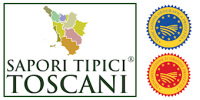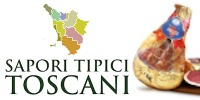Our network:
Sunday 22 December 2024
Palazzo Chigi-Zondadari
Siena, which still today fascinates and seduces the visitor, is a city that has preserved its distinctly Medieval flavour intact. The city we see today in fact took shape during the Middle Ages, when Siena embarked on its most ambitious building spree ever. Later architecture is nonetheless represented, and the Palazzo Chigi-Zondadari, built in the graceful, composed style of the 18th century, is one of its finest examples.
Facing onto Piazza del Campo, construction of Palazzo Chigi-Zondadari was started in 1726 by order of Cardinal Antonio Felice Zondadari. Although of Senese descent, the cardinal lived in Rome and would often return to Siena to rest in his villa at Ancaiano.
The Roman architect Antonio Valeri designed the palazzo. Valeri had acquired a certain fame after winning a competition under Pope Clement XI to design a new sacristy for St Peter’s in Rome, where he had submitted two projects. With the pope’s sudden death the project was abandoned, however. Records indicate that the foundations of the palazzo in Siena were laid in 1724 and that by October 1726 the building was already half finished. It would appear that the building site was run by another architect, however - a man named Pietro Hustini – around whose origins there is some doubt. Although officially from Rome, some scholars believe Hustini could have been in fact a Frenchman who had come to the Papal capital to study architecture and who had remained in the city.
A number of problems plagued the building of the palazzo, which is one of Siena’s largest. A 1297 statute dictating the parameters of buildings looking onto Piazza del Campo placed considerable limitations of height and style on new buildings. The result is that despite its scale Palazzo Chigi-Zondadari is restrained in appearance, fully in harmony with the neighbouring Palazzo Sansedoni and Palazzo Piccolomini.
The Siena Biblioteca Comunale, or council library, contains the original plans for Palazzo Chigi-Zondadari. As well as the plans for the building we see facing onto Piazza del Campo today, the documents also contain details of another building erected at the same time by one of Siena’s most important 18th century architects, Jacopo Franchini. On the basis of this evidence, some experts have put forward the theory that Franchini may have also had a hand in the construction of Palazzo Chigi-Zondadari.
Facing onto Piazza del Campo, construction of Palazzo Chigi-Zondadari was started in 1726 by order of Cardinal Antonio Felice Zondadari. Although of Senese descent, the cardinal lived in Rome and would often return to Siena to rest in his villa at Ancaiano.
The Roman architect Antonio Valeri designed the palazzo. Valeri had acquired a certain fame after winning a competition under Pope Clement XI to design a new sacristy for St Peter’s in Rome, where he had submitted two projects. With the pope’s sudden death the project was abandoned, however. Records indicate that the foundations of the palazzo in Siena were laid in 1724 and that by October 1726 the building was already half finished. It would appear that the building site was run by another architect, however - a man named Pietro Hustini – around whose origins there is some doubt. Although officially from Rome, some scholars believe Hustini could have been in fact a Frenchman who had come to the Papal capital to study architecture and who had remained in the city.
A number of problems plagued the building of the palazzo, which is one of Siena’s largest. A 1297 statute dictating the parameters of buildings looking onto Piazza del Campo placed considerable limitations of height and style on new buildings. The result is that despite its scale Palazzo Chigi-Zondadari is restrained in appearance, fully in harmony with the neighbouring Palazzo Sansedoni and Palazzo Piccolomini.
The Siena Biblioteca Comunale, or council library, contains the original plans for Palazzo Chigi-Zondadari. As well as the plans for the building we see facing onto Piazza del Campo today, the documents also contain details of another building erected at the same time by one of Siena’s most important 18th century architects, Jacopo Franchini. On the basis of this evidence, some experts have put forward the theory that Franchini may have also had a hand in the construction of Palazzo Chigi-Zondadari.
Booking.com
• Siena in the Renaissance
• Siena in the Middle Ages
• Siena in Antiquity
• Town Map Siena
• Farm Holidays and Country Houses
• Residence, Apartments
• Bed & Breakfasts
• Historical Residences
• Last Minute Siena
• Restaurants
• Pubs & Wine Bar
• University for Foreigners
• Palazzo Chigi-Saracini
• Palazzo d’Elci degli Alessi
• Loggia della Mercanzia
• Palazzo Sansedoni
• Palazzo Chigi-Zondadari
• Fonte Gaia fountain
• Carthusian Monastery of Pontignano
• Forte di Santa Barbara
• The Duomo – The Cathedral of the Assunta
• Church of the Osservanza
• The Oratory of San Bernardino
• Church of San Francesco
• Short Biography of St Catherine of Siena
• St Catherine Sanctuary
• Church of S. Niccolò al Carmine
• Bologna-Buonsignori museum
• Accademia dei Fisiocritici
• I Musei Senesi
• The Palazzo Pubblico and the Torre del Mangia
• Piazza del Campo
• The Montagnola Senese and the Fortified Village of Sovicille
• The Castles of Belcaro and Quattro Torri
General information
• Town map • Siena in the Renaissance
• Siena in the Middle Ages
• Siena in Antiquity
Transport in town
• Map of Hotels in Siena • Town Map Siena
Transport out of town
• Train services
Where to Stay
• Hotels • Farm Holidays and Country Houses
• Residence, Apartments
• Bed & Breakfasts
• Historical Residences
OFFERS & LAST MINUTE
• Reservation Services Siena • Last Minute Siena
Where to eat and drink
• Disco Dancing • Restaurants
• Pubs & Wine Bar
Education
• Siena University • University for Foreigners
Art and monuments
• Palazzo Piccolomini and Palazzo delle Papesse • Palazzo Chigi-Saracini
• Palazzo d’Elci degli Alessi
• Loggia della Mercanzia
• Palazzo Sansedoni
• Palazzo Chigi-Zondadari
• Fonte Gaia fountain
• Carthusian Monastery of Pontignano
• Forte di Santa Barbara
Art and religion
• Church of Sant’Agostino • The Duomo – The Cathedral of the Assunta
• Church of the Osservanza
• The Oratory of San Bernardino
• Church of San Francesco
• Short Biography of St Catherine of Siena
• St Catherine Sanctuary
• Church of S. Niccolò al Carmine
Museums and galleries
• The Museo Civico • Bologna-Buonsignori museum
• Accademia dei Fisiocritici
• I Musei Senesi
Art and tourist attractions
• Cappella di Piazza • The Palazzo Pubblico and the Torre del Mangia
• Piazza del Campo
• The Montagnola Senese and the Fortified Village of Sovicille
• The Castles of Belcaro and Quattro Torri
Booking.com
• The July and August Palio
• The Contrade
• The Days of the Palio
• The Drappellone
• The Eve of the Palio
• The Corteo Storico Procession
• The Race
• The Patron Saint and Oratory of Each Contrada
• Weekly Appointments in each Contrada from April onwards
• Croce del Travaglio Place
• From Piazza del Campo to the Duomo Along Via di Città
• The Curves of Piazza del Campo
• Costarella dei Barbieri street
• Borgo d’Ovile
• The Terzo of Camollia – main streets
• Casato di Sopra e Casato di Sotto
• Terzo di San Martino district
• The Terzo di Città District - Via Stalloreggi, Via San Quirico
• The Terzo di Città District – The Pinacoteca Nazionale
• Golf courses in Siena and Tuscany
• Wedding in Tuscany - Siena area
• San Casciano dei Bagni
• Chianciano Terme
• Bagni San Filippo
• Bagno Vignoni
• Rapolano Terme - Baths of San Giovanni and Baths of the Antica Querciolaia
• The Countryside around Siena and its Thermal Water Springs
• SkiPass Monte Amiata
• WebCam sul Monte Amiata
• Meteo Monte Amiata
• The Val d’Orcia and Its Main Towns
• Pienza - the old town centre
• Montepulciano - the old town centre
• San Quirico d’Orcia - the old town centre
• Montalcino and the Land of Brunello
• The Abbey of Monte Oliveto Maggiore and the Crete
• The Crete Senesi
• Castellina in Chianti and the Via Chiantigiana Towards Siena
• Siena and Southern Chianti - from the Castle of Montalto to the Castle of Brolio and on to the Castle of Meleto
• The Chianti Hills - Monte Calvo, Monte Luco and Monte San Michele
• Cortona and the Valdichiana
• San Gimignano - The old town centre and its major sights
• The Val d’Elsa - Monteriggioni and Colle di Val d’Elsa
• Along the Old Via Francigena
• Oleum Evo online selling
• Sapori Tipici Italiani buy online now
• il Prosciutto Cotto
The Palio of Siena
• The Origins • The July and August Palio
• The Contrade
• The Days of the Palio
• The Drappellone
• The Eve of the Palio
• The Corteo Storico Procession
• The Race
• The Patron Saint and Oratory of Each Contrada
• Weekly Appointments in each Contrada from April onwards
Sightseeing
• Via di Città (formerly Via Galgaria), Siena’s Most Elegant Street • Croce del Travaglio Place
• From Piazza del Campo to the Duomo Along Via di Città
• The Curves of Piazza del Campo
• Costarella dei Barbieri street
• Borgo d’Ovile
• The Terzo of Camollia – main streets
• Casato di Sopra e Casato di Sotto
• Terzo di San Martino district
• The Terzo di Città District - Via Stalloreggi, Via San Quirico
• The Terzo di Città District – The Pinacoteca Nazionale
What to see & do
• Wedding in Siena • Golf courses in Siena and Tuscany
• Wedding in Tuscany - Siena area
• San Casciano dei Bagni
• Chianciano Terme
• Bagni San Filippo
• Bagno Vignoni
• Rapolano Terme - Baths of San Giovanni and Baths of the Antica Querciolaia
• The Countryside around Siena and its Thermal Water Springs
Monte Amiata
• Monte Amiata - nature tourism the year round • SkiPass Monte Amiata
• WebCam sul Monte Amiata
• Meteo Monte Amiata
Specials - Out of town
• Gift Ideas for traveling • The Val d’Orcia and Its Main Towns
• Pienza - the old town centre
• Montepulciano - the old town centre
• San Quirico d’Orcia - the old town centre
• Montalcino and the Land of Brunello
• The Abbey of Monte Oliveto Maggiore and the Crete
• The Crete Senesi
• Castellina in Chianti and the Via Chiantigiana Towards Siena
• Siena and Southern Chianti - from the Castle of Montalto to the Castle of Brolio and on to the Castle of Meleto
• The Chianti Hills - Monte Calvo, Monte Luco and Monte San Michele
• Cortona and the Valdichiana
• San Gimignano - The old town centre and its major sights
• The Val d’Elsa - Monteriggioni and Colle di Val d’Elsa
• Along the Old Via Francigena
Typical products
• Typical Tuscan flavours • Oleum Evo online selling
• Sapori Tipici Italiani buy online now
• il Prosciutto Cotto









